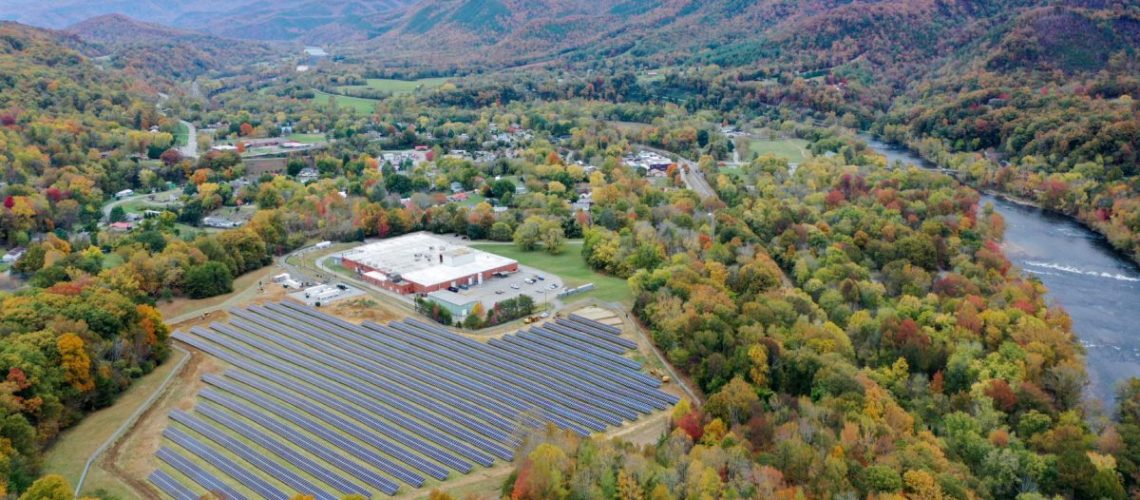The solar plus lithium-ion battery microgrid provides power to the Appalachian town during a black start, which during a power outage allows for a full repowering without the use of the local grid.
A rural Appalachian town named for a thermal hot spring on the North Carolina-Tennessee border will soak up clean electrons from the sun and a large grid-scale battery system. Duke Energy completed construction on a 2 MW solar and 4.4 MWh storage project in Hot Springs, N.C., a town with population of just 500.
The Hot Springs microgrid provides grid reliability services to the electric grid, such as frequency and voltage regulation and ramping support and capacity during system peak power usage.
“Duke Energy has numerous smaller microgrids on our system, but this is our first microgrid that can power an entire small town if its main power line experiences an outage,” said Jason Handley, general manager of Duke Energy’s Distributed Energy Group.
The rural Appalachia town, named for a natural thermal spring at the confluence of the French Broad River and Spring Creek, was faced with limited transmission and distribution rerouting options should a power outage occur. During its testing phase, Duke Energy’s microgrid was able to pick up the town’s entire load from a black start without any help from the energy grid – using only the solar and battery storage to restore power. The microgrid served the town’s load while the company gathered data.
“Through energy storage and microgrids, Duke Energy can enable the integration of more renewables onto the grid and help improve reliability while keeping costs affordable for customers and the communities we serve,” said Handley.
Wärtsilä Energy, the Finnish energy company, supplied the battery energy storage system for the grid project. The microgrid utilizes Wärtsilä’s GEMS Digital Energy Platform, an energy management system for integrated control of both solar and energy storage resources.
In a recent interview with pv magazine USA, Andrew Tang, Vice President of Energy Storage & Optimization at Wärtsilä Energy, said the energy storage systems provider is on track to deliver 4 GWh of battery systems this year. With momentum from the federal Inflation Reduction Act spurring increased activity for energy storage, Wärtsilä expects to see growth at about 20% CAGR per year from 2023 into 2024.
Wärtsilä’s grid storage systems are housed in a 1.5 MWh trailer cube, measuring 8 feet x 44 feet per trailer, meaning the Hot Springs battery system will use about three storage trailer units, Tang said.
The company’s U.S. storage business has seen steady activity in Hawaii, Texas, California, Arizona and Georgia, with assorted smaller dispatched systems also cropping up in the Southeast region, which Tang called a “hotbed for solar plus storage.”
“The Hot Springs inverter-only-based community microgrid is a great step forward for Duke Energy and our customers. This project has reduced the need for equipment upgrades in an environmentally sensitive area,” said Handley. “We are using lessons learned from this first-of-its-kind installation to take to our other microgrids under construction in Indiana and Florida.”
So far Duke Energy has over 60 MW of microgrid projects s connected throughout its regulated areas around the Southeast region. In Asheville, N.C., Duke operates a 9-megawatt lithium-ion battery system at a substation site in the Rock Hill community. In Haywood County, N.C., the utility operates a 3.8 kWh lithium iron phosphate battery and 10 kW solar DC microgrid serving a telecommunications tower, located on Mount Sterling in the Smoky Mountains National Park.



